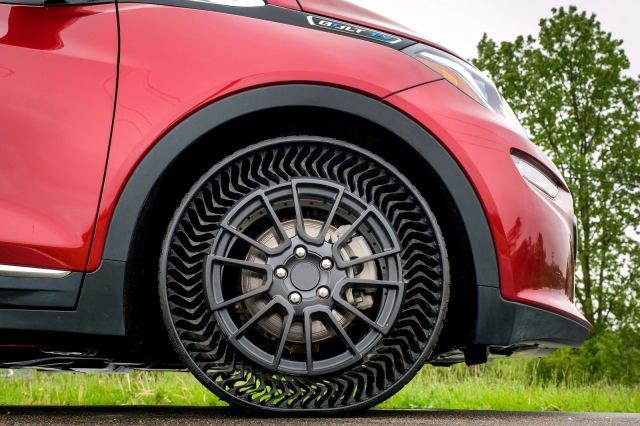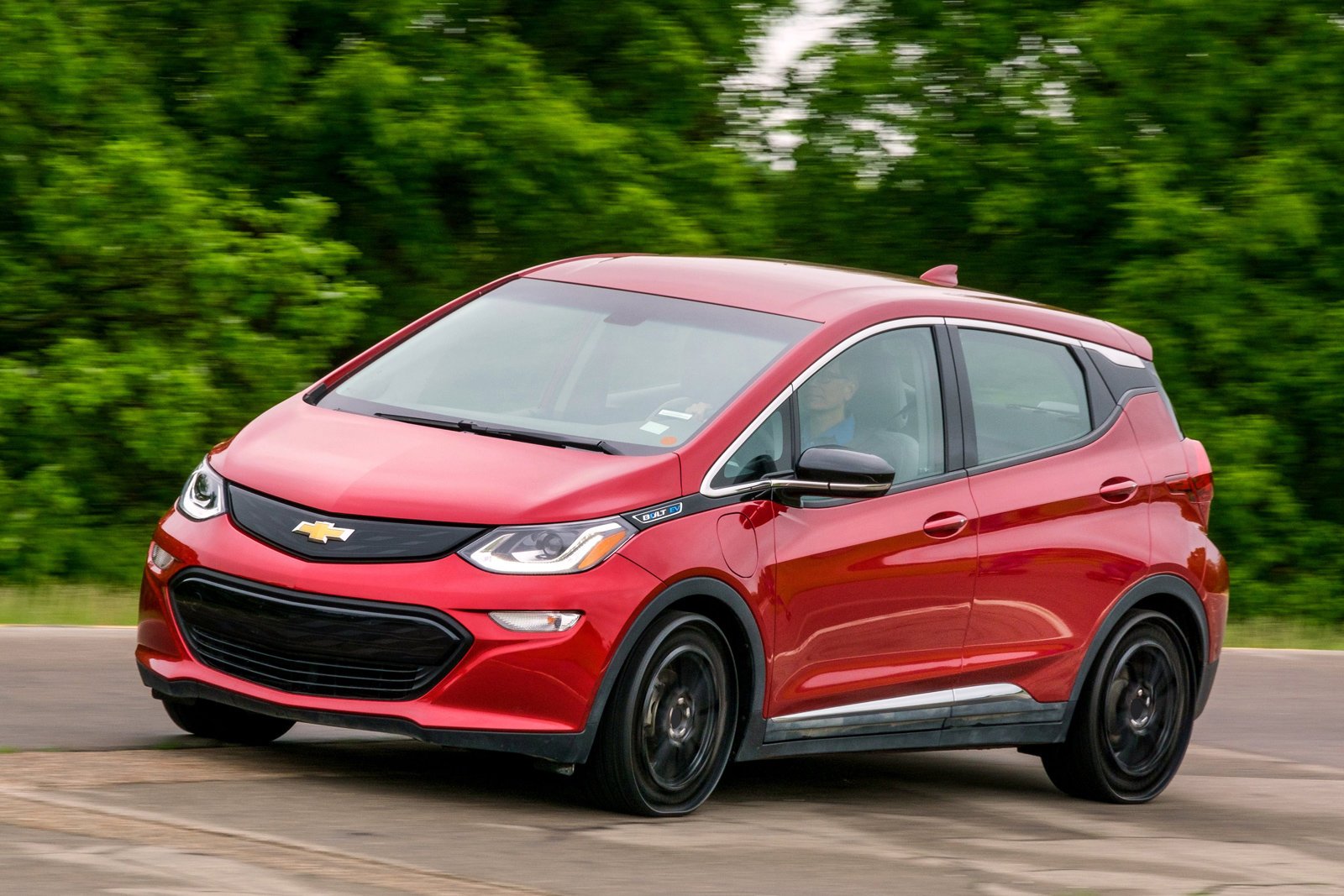Reinventing the wheel - with airless tires

Reinventing the wheel might sound like a lot of hot air, but these companies are on the verge of actually doing it.
While the wheel is widely regarded as a perfect prehistoric technology, the tire is far from it. Essentially just big, strong balloons, tires are vulnerable to changes in pressure, temperature, and road debris. They also need constant maintenance, from refilling to rotation and replacement.
But what if they didn't?
That's the question that tire manufacturers like Bridgestone and Michelin are hoping to answer with their new non-pneumatic tires. These airless tires replace the familiar balloon model with thermoplastic or poly-resin spokes that connect the wheel's center to a high-tension rim. The spokes of the tire are rigid enough to provide the necessary pressure, but flexible enough to deform over bumps and ridges. They don't deflate, can't be punctured, and are less effected by changing temperatures, making them an all-around upgrade. And as amazing as these would be to bolt onto your car, the manufacturers have higher ambitions.
Transforming trucking
While you may drive a lot, it's practically guaranteed that commercial trucks have put in many more miles than your car. The average trucker can drive up to 3000 miles a week, and for drivers, mileage is money. That means when a truck has to stop in order to fix a tire-related issue, it hurts everybody's bottom line.
Having a tire that's reliable as a truck travels through multiple environments, climates, and temperatures also means there's one less factor for logistics companies when calculating things like insurance rates and ETAs. Combined with other connected vehicle technologies, airless tires have the potential to radically improve driver safety, and further optimize supply chains and long-haul freight delivery.

Made for sharing
Of course, trucks aren't the only vehicles constantly on the road. Airless tires would also be a boon to rideshares. Bridgestone plans to debut their tires during the 2020 Tokyo Olympic Games, providing a fleet of bicycles for athletes and visitors alike to get around the very bike-friendly city. By being generally more durable, these airless tires should be able to withstand the abuse given by riders who aren't as invested in a vehicle they're only borrowing compared to one they own. Tire maintenance is also one less responsibility that rideshare fleet operators have to worry about affecting their customer's experience. Of course, these benefits scale to rideshare cars as well, and once those vehicles are driverless, having airless tires is one less point-of-failure to potentially confuse the AI.
A greener cycle
If efficiency is the common theme that describes the benefits of airless tires, then sustainability is also a factor. By eliminating variable air-pressure, non-pneumatic tires retain 90% of the energy lost to tire rolling resistance, reducing carbon emissions. Taking less wear-and-tear also means that these tires don't have to be replaced as often, keeping more material out of landfill. Additionally, many of these concepts are made from greener, recyclable materials – reducing the amount of pollution released from their production. It makes sense, then, that Michelin is testing their Uptis (Unique Puncture-Proof Tire System) tires with GM's Chevrolet Bolt EVs, creating an overall cleaner car.
Reinventing the wheel goes a long way towards driving cars into the future, but HERE offers a suite of powerful automotive solutions to make cars smarter as well as more environmentally friendly.
Have your say
Sign up for our newsletter
Why sign up:
- Latest offers and discounts
- Tailored content delivered weekly
- Exclusive events
- One click to unsubscribe